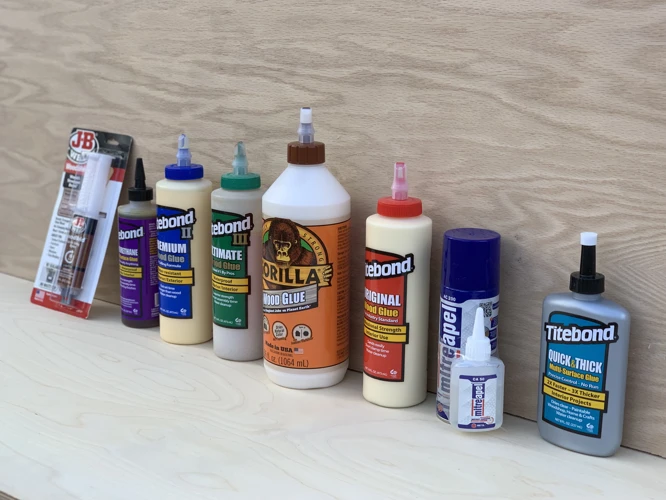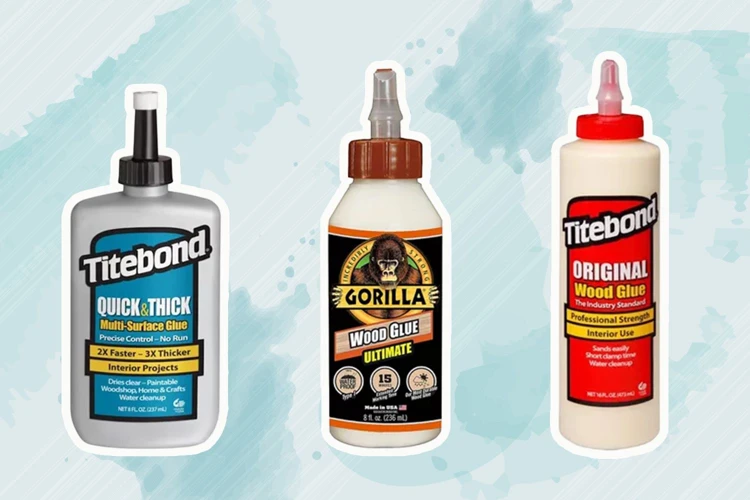When it comes to crafting kitchen items such as cutting boards and wooden utensils, the safety of the materials used is paramount. Among these, food safe wood glue is critical for ensuring that your wooden creations are not only sturdy but also safe for contact with food. But what exactly makes a wood adhesive safe for such applications?
What Makes Wood Glue Food Safe?
A wood glue is considered food safe when it does not contain harmful chemicals that can leach into food. Such adhesives are designed to be inert once cured, meaning they won’t react chemically with food substances. They should meet stringent requirements set by regulatory bodies to be deemed safe for use in areas where food is prepared or consumed.
FDA Approved Wood Glue: What You Need to Know
The U.S. Food and Drug Administration (FDA) sets standards for materials intended to come into contact with food. An FDA approved wood glue is one that has passed these standards and is deemed safe for such contact. These adhesives typically contain ingredients that, under the FDA’s guidelines, are considered safe for ingestion in small quantities.
Identifying Non-Toxic Wood Adhesive Options
To identify a non-toxic wood adhesive, it is essential to read the product labels and safety data sheets. These documents provide information about the ingredients and their potential hazards. Opt for products that specifically mention their suitability for indirect food contact and those that are certified by reputable organizations.
Choosing the Right Food Safe Wood Glue
Selecting the appropriate adhesive for your project is not just about strength and durability; it’s also about ensuring that it is safe for its intended use. Whether you are a professional woodworker or a DIY enthusiast, knowing the right type of glue to use is crucial.
Best Food Grade Glue for Various Projects
The best food grade glue for a project depends on the specific requirements of the task at hand. Some projects may demand water resistance, while others might need a glue that can withstand different temperatures. Epoxy resins, for instance, are often recommended due to their strong bonding properties and food-safe variants.
Safe Wood Glue for Cutting Boards: What to Look For
When searching for a safe wood glue for cutting boards, you need to consider factors such as water resistance and ease of cleaning. A cutting board is frequently washed, so the glue must withstand this without breaking down or compromising food safety.
Edible Wood Glue: Is There Such a Thing?
While the term edible wood glue might suggest a glue that is safe to eat, in reality, it refers to adhesives that are non-toxic and safe for incidental contact with food. It’s important to understand that while these glues are non-toxic, they are not meant to be ingested in large amounts.
Using Wood Glue in the Kitchen
Woodworking projects for the kitchen require special consideration for safety. The adhesives used in these projects must not only be strong and durable but also safe for contact with food and kitchen utensils.
Kitchen Wood Glue Safety: Precautions and Tips
When using kitchen wood glue safety measures are crucial. Always work in a well-ventilated area, wear protective gear, and allow the glue to cure fully as per the manufacturer’s instructions before using the item with food.
Wood Glue for Food Contact Surfaces: Application Guide
- Ensure surfaces to be bonded are clean and dry.
- Apply glue according to the manufacturer’s instructions.
- Clamp the pieces together securely to ensure a strong bond.
- Allow the glue to cure fully before using the surface for food contact.
DIY Food Safe Wood Projects
Creating homemade kitchen items can be a rewarding experience. However, it’s important to use the right materials and techniques to ensure that these items are safe for food contact.
Creating Your Own Safe Wood Glue for Cutting Boards
For those interested in DIY food safe wood projects, making your own glue for cutting boards can be an intriguing challenge. Titebond III Ultimate Wood Glue is a popular choice among DIYers for its strength and food-safe properties after curing.
Woodworking Food Safe Finishes and Glues: A Comprehensive Guide
When it comes to woodworking food safe finishes and glues, there is a range of products to consider. These can include mineral oil finishes, beeswax, and certain varnishes that are specifically formulated to be safe for contact with food.
Maintenance and Care for Glued Food Safe Surfaces
The longevity of your kitchen wood creations greatly depends on proper maintenance and care. This ensures not only the durability of the item but also the continued safety of the surfaces that come into contact with food.
How to Clean and Maintain Your Food Safe Wood Creations
Cleaning your wood items with a mild soap and water solution is generally recommended. Avoid soaking them, and dry thoroughly after cleaning to prevent the wood from warping or the glue from weakening.
Longevity of Food Safe Wood Glues: Shelf Life and Storage
Proper storage of food safe wood glues can extend their shelf life. Keep them in a cool, dry place and tightly seal the container to prevent them from drying out or deteriorating.
Troubleshooting Common Issues with Food Safe Wood Glue
Even with careful application, sometimes you may encounter issues with your adhesive. Knowing how to troubleshoot these problems can save your project and maintain its food-safe integrity.
What to Do When Food Safe Wood Glue Doesn’t Bond Properly
If you find that your glue isn’t bonding as it should, it’s important to assess the surfaces being glued. They should be clean and properly prepared. Reapplication of the adhesive might be necessary after addressing any surface issues.
Removing Food Safe Wood Glue from Surfaces and Skin
Accidental spills or drips of glue can be a hassle. To remove food safe wood glue from surfaces, gently scrape off the excess once it has dried. For skin, warm soapy water and a mild abrasive, like salt, can help loosen and remove the adhesive.
Advanced Tips and Tricks
Enhancing the durability and safety of your wood projects can be achieved with a few advanced techniques. These can make all the difference in the final product’s quality and longevity.
Enhancing the Bond: Techniques for Better Adhesion
For improved adhesion, ensure that the wood surfaces are flat and smooth. Roughening the surfaces slightly with sandpaper can also help the glue to grip better. Additionally, using the right amount of glue is crucial — too little won’t hold, while too much can weaken the bond.
When working on projects that come into contact with food, it’s crucial to choose the right adhesive. If you’re specifically looking for information on food-safe wood glue, our article on what glue is food safe will provide you with the necessary insights to make an informed decision. For those tackling projects that will endure high temperatures, you may also be interested in our article about what glue is oven safe. And for any application where moisture is a concern, our guide on what glue is waterproof could prove invaluable. Each article is designed to help you select the best glue for your specific needs, ensuring durability and safety for your projects.
Designing with Food Safety in Mind: Best Practices for Woodworkers
When designing items for food use, consider the cleanability and durability of the design. Avoid intricate designs where food particles can get trapped, and choose a wood type and glue that can withstand the wear and tear of kitchen use.
Whether you’re a seasoned woodworker or a hobbyist looking to undertake your next kitchen project, understanding and choosing the right food safe wood glue is key to creating beautiful, durable, and safe wooden items for your home.


